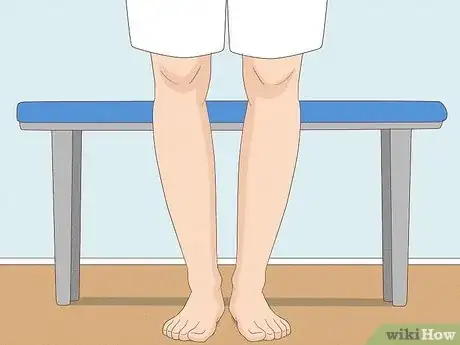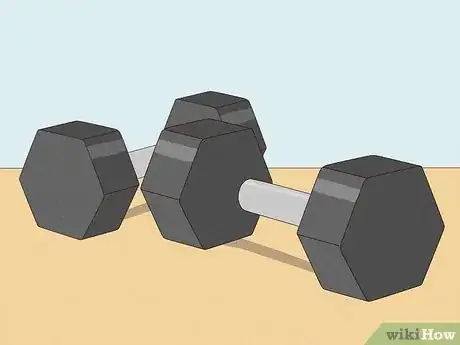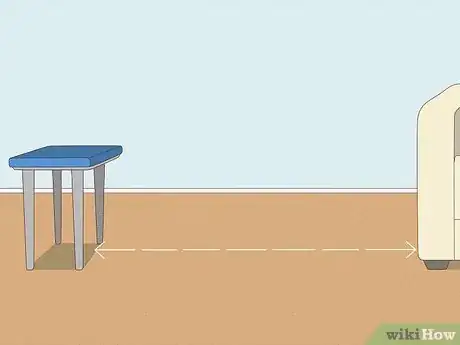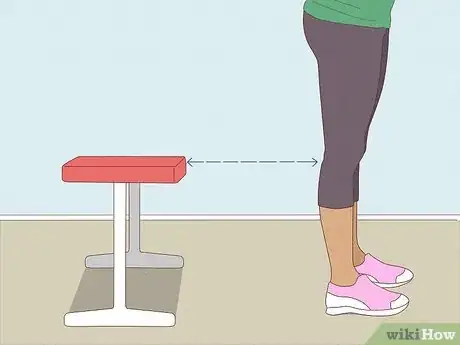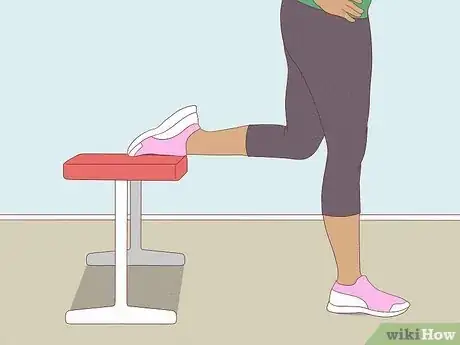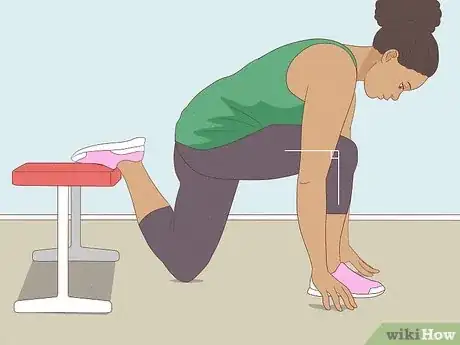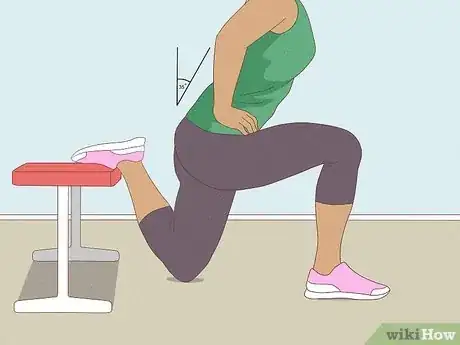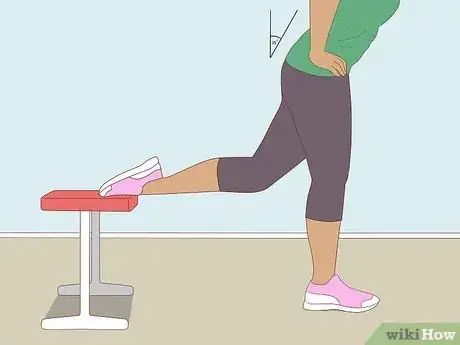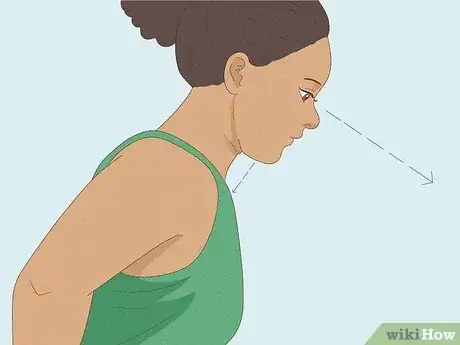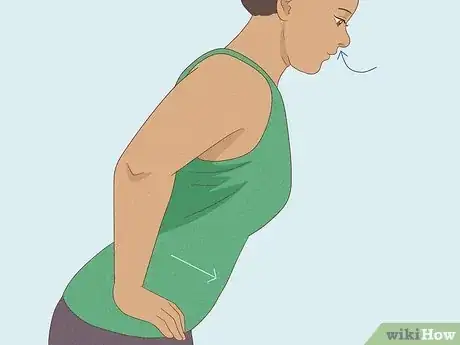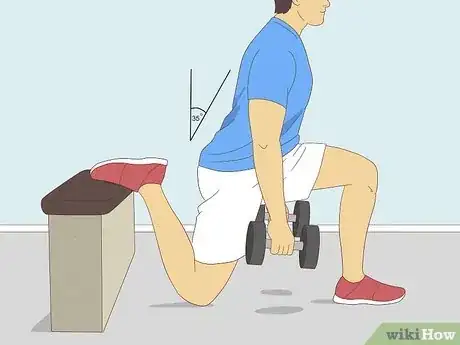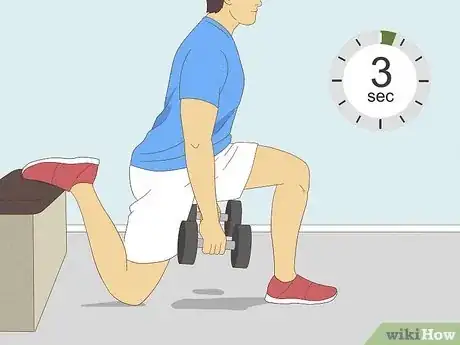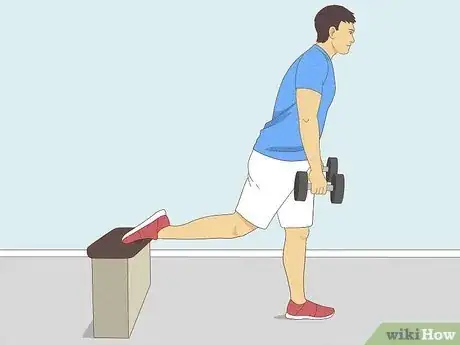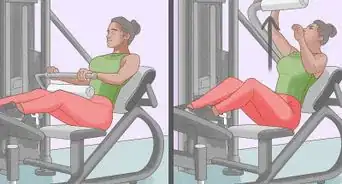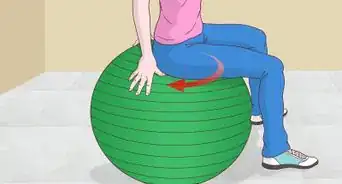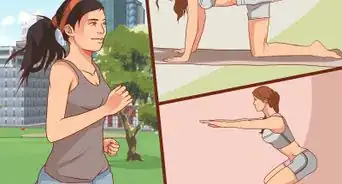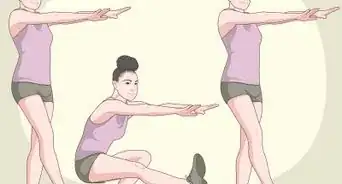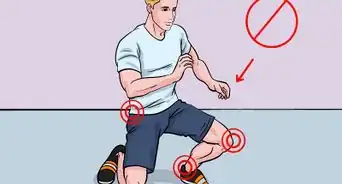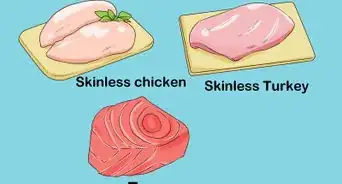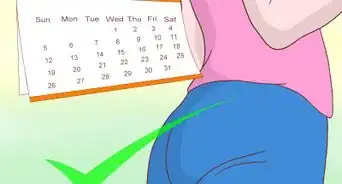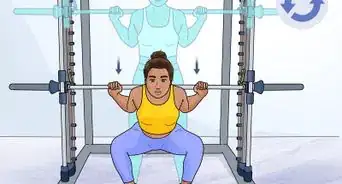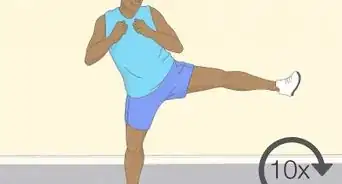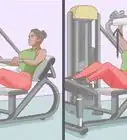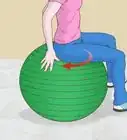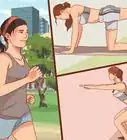X
wikiHow is a “wiki,” similar to Wikipedia, which means that many of our articles are co-written by multiple authors. To create this article, volunteer authors worked to edit and improve it over time.
This article has been viewed 26,539 times.
Learn more...
Bulgarian split squats (BSS), a single-leg exercise that uses the glutes, quads, and core, are an essential exercise to grow and strengthen the gluteal muscles and legs. Not only are BSS one of the best exercises for muscle growth, but they also improve balance, mobility, and prevent muscle imbalances. BSS can be a great addition to your leg routine, and it can even be an alternative to barbell back squats for those who experience lower back and hip pain.
Steps
Part 1
Part 1 of 3:
Equipment
-
1Find a bench. The bench used should be near knee-height. If no bench meets this criteria, opt for a Smith's machine and set the bar to the height needed.
- A bar cushion can be added to the bar for comfort.
-
2Find correct weights. You can use bodyweight, one dumbbell, or two dumbbells depending on how advanced you are with weightlifting.
- You should be able to perform 8-10 reps with this weight.
- Beginners should start with bodyweight and progress once comfortable with form.
Advertisement -
3Scope for space. It is easiest to perform BSS in an open area, away from others. This is because BSS can take up a substantial amount of space between immobile benches. Remain mindful of others' personal bubbles.
Advertisement
Part 2
Part 2 of 3:
Set Up
-
1Find your standing position. Your standing position should be near, but not touching, the bench. Facing away from the bench, utilize a mirror to find enough space between yourself and the bench to allow enough room to lift your foot backwards.
- This space will look different for everyone as we all have different leg lengths and flexibility range.
-
2Prop your foot. Lifting one foot off the ground, lay the top of the foot flat on the bench. Keep your ankle on the edge of the bench to allow it to move during the exercise.
- If there is any discomfort in this step, you are likely too far from the bench.
- The foot on the bench will be referred to as the "elevated foot."
-
3Correct your knee position. While keeping the elevated foot on the bench, crouch down, and towards your grounded foot. Using your hands for stability, move your grounded foot so that your knee creates a 90-degree angle.
- When crouching, allow your knee to hit the floor.
- Looking in a mirror to check your form can be useful during this step.
-
4Lift your torso. Lift your hands off the ground and stand your torso at a 35-degree lean forward.
- If performing with bodyweight, place your hands on your hips.
- If performing with dumbbells, pick them up while lifting your torso. It is okay if your elevated foot's knee comes off the ground.
-
5Complete the stand. Maintaining your 35-degree lean, straighten your grounded leg.
- Keep a slight bend in the knee for safety and stability.
- Keep the elevated foot resting on the bench.
-
6Protect your spine. Make sure that your chin is tucked towards your chest. your chin does not need to touch your chest. Find a focal point on the ground to keep your gaze consistent.
- Injury or strain may result from an untucked chin, especially while using weights.
-
7Recruit other muscles. Engaging your core and latissimus dorsi muscles is essential to complete this exercise with correct form. These two muscle groups aid in keeping a straight back as well as holding dumbbells.
- To engage your latissimus dorsi, flex your shoulders up and back. You should feel a sort of tightness in your upper back.
- To engage your core, take a deep breath into your diaphragm. Think of tightening your stomach upwards.
Advertisement
Part 3
Part 3 of 3:
Movement
-
1Descend your body. Start with taking in a deep breath. Leading with your rear end, slowly descend your trunk towards your elevated foot until your knee hits the ground or your rear hits the back of your elevated heel.
- This should look like a diagonal movement rather than straight down.
- Focus the weight on the heel of the grounded foot. This will start the glute function. Do not lift your toes.
- Keep your back straight and maintain the 35-degree lean throughout the exercise.
- Avoid letting your chest fall to your grounded leg.
-
2Pause in position. Once your knee of the elevated leg hits the floor or your rear hits your elevated heel, hold this position for three seconds.
- This creates time for your mind to connect to your muscles, specifically the glutes.
- Performing an exercise slowly and controlled is much more effective for muscle growth and strength.
-
3Ascend your body. Using the power of the grounded leg, straighten your knee and ascend your torso upwards at the same 35-degree lean. Let out your breath while ascending.
- This is a diagonal motion.
- Push into the ground with your grounded heel, this insures glute activation.
- Avoid lifting your toes.
-
4Continue the exercise. Repeat step 1-3 of the Movement portion as many times as needed. A good goal to aim for is 8-10 reps on each leg. Once the desired amount of reps is completed on one leg, switch legs and repeat the process.
- It is important, especially during single-leg exercises, to perform the same number of reps and sets on each leg. This prevents muscle imbalances that could lead to injury.
Advertisement
References
About This Article
Advertisement
